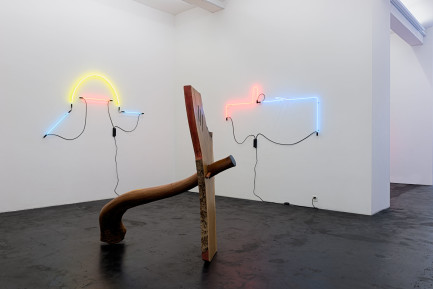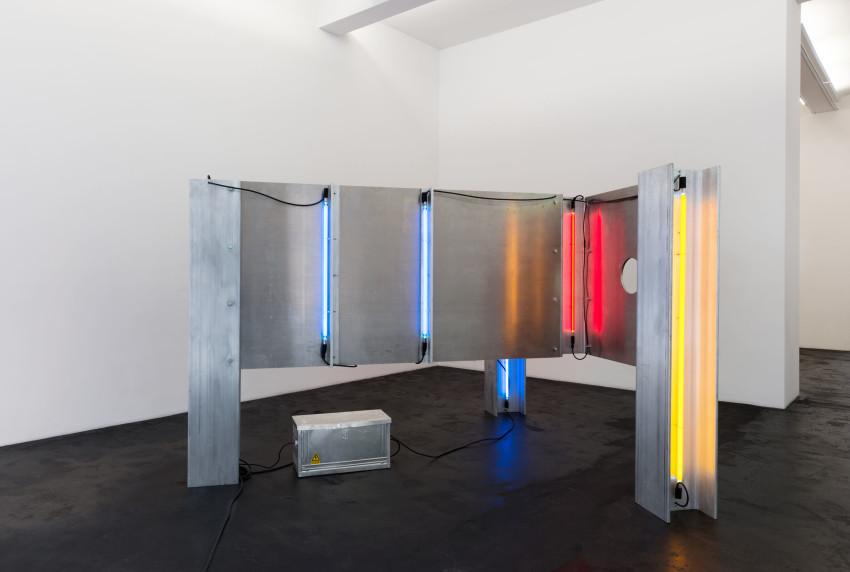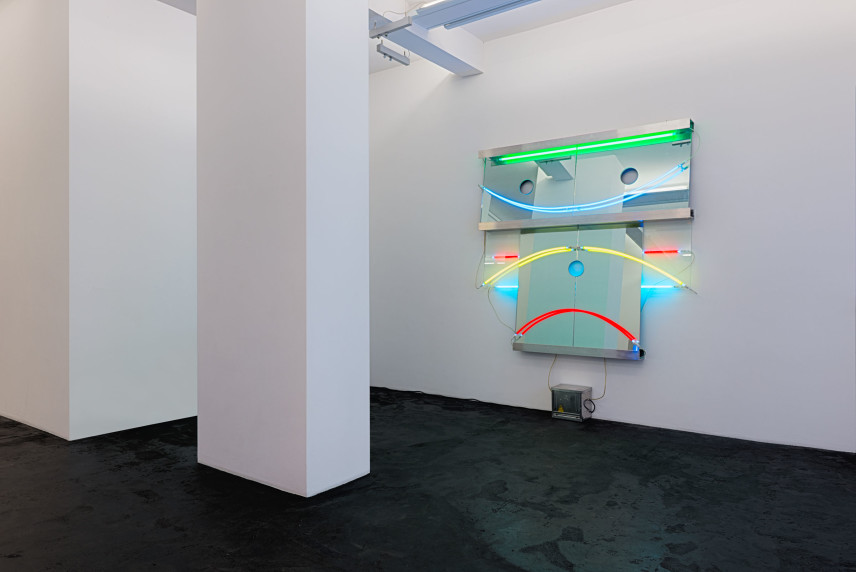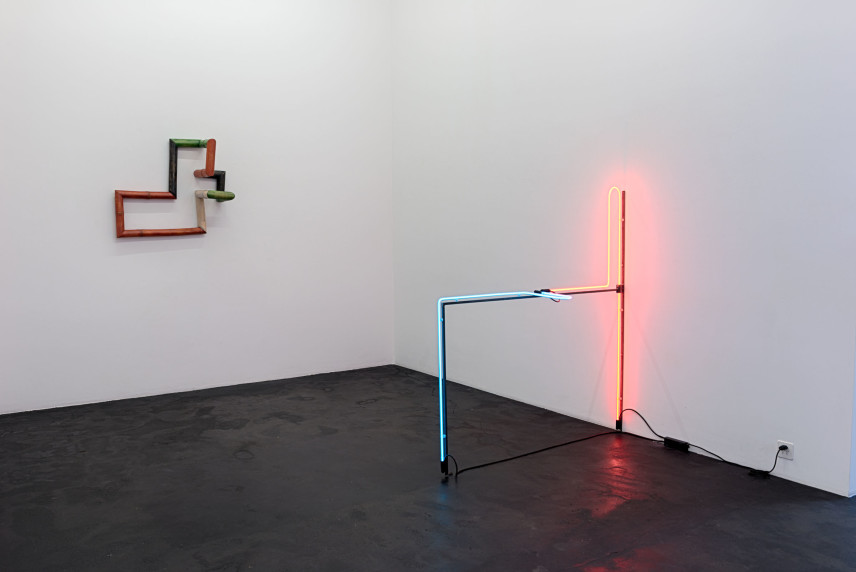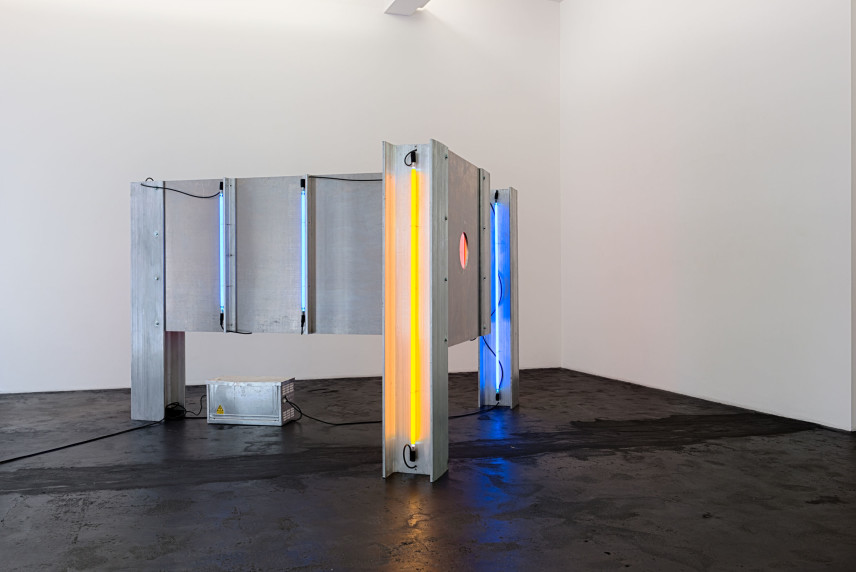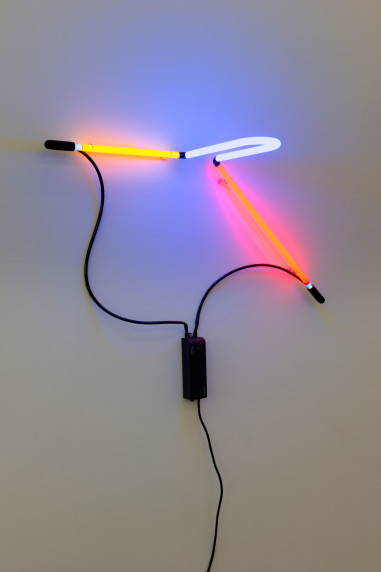As the title implies, the theme of the «Portal Series» from 2013/2014 which we are presenting for the first time in Zurich is accessing architectural space. Wall pieces made with simple neon structures such as «Portal Wall» or «Patio Portal« suggest possible passages or openings, whereas «Portal Wall Extension» expands directly from the wall to the floor, becoming a freestanding portal. The works from the «Portal Series» that we present in our exhibition are remarkable in that they consist of a maximum of three to four neon tubes, always in the primary colors of red, yellow, and blue, and they all are characterized by clear horizontals, verticals, and 45 degree diagonals. A system of spatial coordinates with rounded protrusions sees to point in specific directions. These protrusions can also be read as elements that penetrate space, adding an erotic connotation to the pieces that is implicit in many of Sonnier’s works.
The protrusion as a formal element is also part of the exotic bamboo, wood and aluminum sculptures from the early 1980s that have not been exhibited in Europe for a long time. These works were inspired by Sonnier’s extended travels and periods of work in Japan, India, China and Indonesia. They appear minimal and archaic and as such form an important aspect of Sonnier’s oeuvre: «The first bamboo pieces I made in India were in fact the first free-standing works that I made, and although they looked like tribal pieces, they were in a sense early studies for work that would be made later in New York from Western materials», the artist says.
The artist’s new found approach to dealing with materials and space resulted in sculptures like «Kiosk I» from 1987. The large object that stands on three legs is architectural in scale and construction and anticipates the ideas inherent in the Portal Series. «Frankfurt Dyad» is a further example of the kind of work the artist created at a time when he when he was deeply involved in the study of architectural elements and materials.
Our exhibition highlights selected works from different periods, and recurring themes central to the development of Keith Sonnier’s oeuvre. It will become evident how he continues to incorporate influences from his surroundings to examine the relationship between sculpture and space time and again. With the continuation of his practice, Sonnier brings the same artistic ingenuity that made him essential to the redefinition of sculpture in the 1960s, to inform and influence our notion of the medium today.
Deborah Keller, Häusler Contemporary

